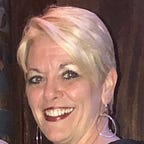Ideas for the first and second language education of English Learners — Spotlight on Dr. Luis Javier Pentón Herrera
“The limits of my language are the limits of my world”- Ludwig Wittgenstein
Dr. Herrera shares his expertise on language education for English learners. I was fascinated by all I learned in our short conversation. Here are a few highlights from our conversation. Enjoy!
Luis Javier Pentón Herrera, Ph.D. served as the 38th President of Maryland TESOL in 2018–2019. He currently serves as a Dissertation Core Faculty in the Department of Educational Leadership and Administration at the American College of Education and as an adjunct professor of TESOL at The George Washington University and of Spanish at the University of Maryland Global Campus.
Language opportunities in education
The primary focus of Luis’ work has been on students who have limited formal education. It’s important for students to understand not only the way they’re learning the language, but how they can use the information that they’re learning. They must learn how to use information in their first language and also in their second language. Using their knowledge in one language, as a bridge to learn the other language. It’s very important for teachers to do more than go over grammar drills, and information but to also explain the connection that this is how you can use it in one language and this is how you can use it in your other language as well.
L1 print literacy — what is it?
L1, is first language and L2 is their second language. A big challenge for second language acquisition learners who have limited formal education or limited schooling, they do not have appropriate first language print literacy skills. It’s very difficult specifically for English learners when they don’t have a foundation in their first language and print knowledge in their first language. It is very hard for them to make that connection. If students do not have a foundation in print literacy, we need to start at that level. It’s not what we want to teach, but we have to meet them where they are. That is a big area of improvement that is needed for our schools right now. And it’s also affecting, specifically that population of learners.
Filling in the gaps for student with limited formal education
SLIFE students (students with limited or interrupted formal education), is a particular population of learners that is fairly unknown in second language acquisition. These students, for a variety of reasons have not been in school for a extended period of time. Often they have experienced several years of missed formal education. This affects roughly 10 to 20% of students in the United States. There are a lot of opportunities to learn what effective practices are needed for these students. We need research to determine what works and what doesn’t work for that population. We also need to think about the concept of bilingualism or multilingualism in US schools. Public schools in the US have been more interested in monolingualism, and teaching English above all other languages. , so when you say for example, we need to teach Luan print literacy in public schools. Not many people are very open to that idea yet.
To hear the rest of the interview with Luis, join us for the second Learning For Life Virtual Summit, March 31st and April 1st. Please take a moment to click this link to sign up for your FREE ticket to the Learning For Life Summit. Can’t wait to see you there!
“Once you learn to read, you will be forever free.”
― Frederick Douglass
The joy is in the journey!
Blessings and Peace,
Mary
